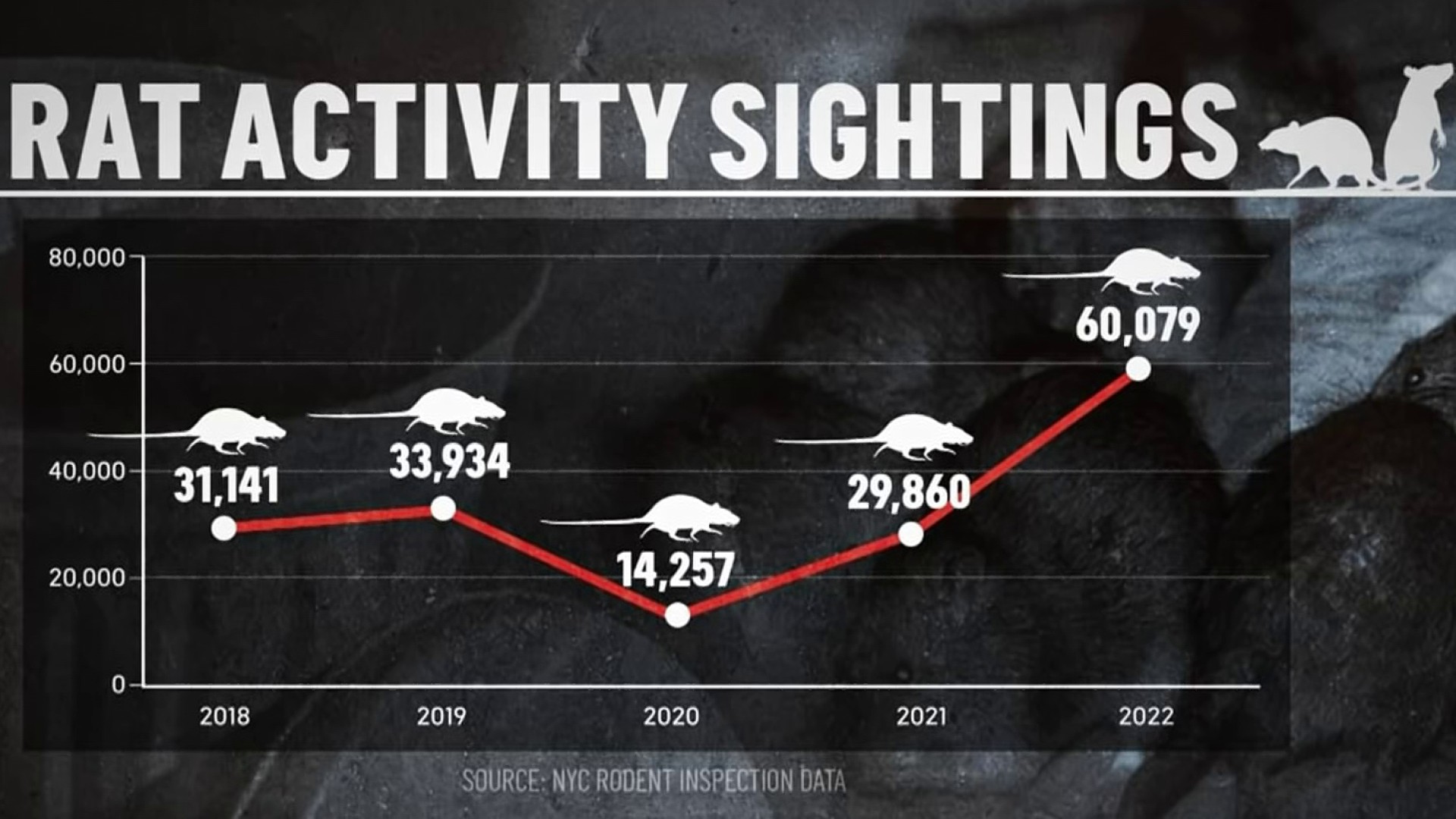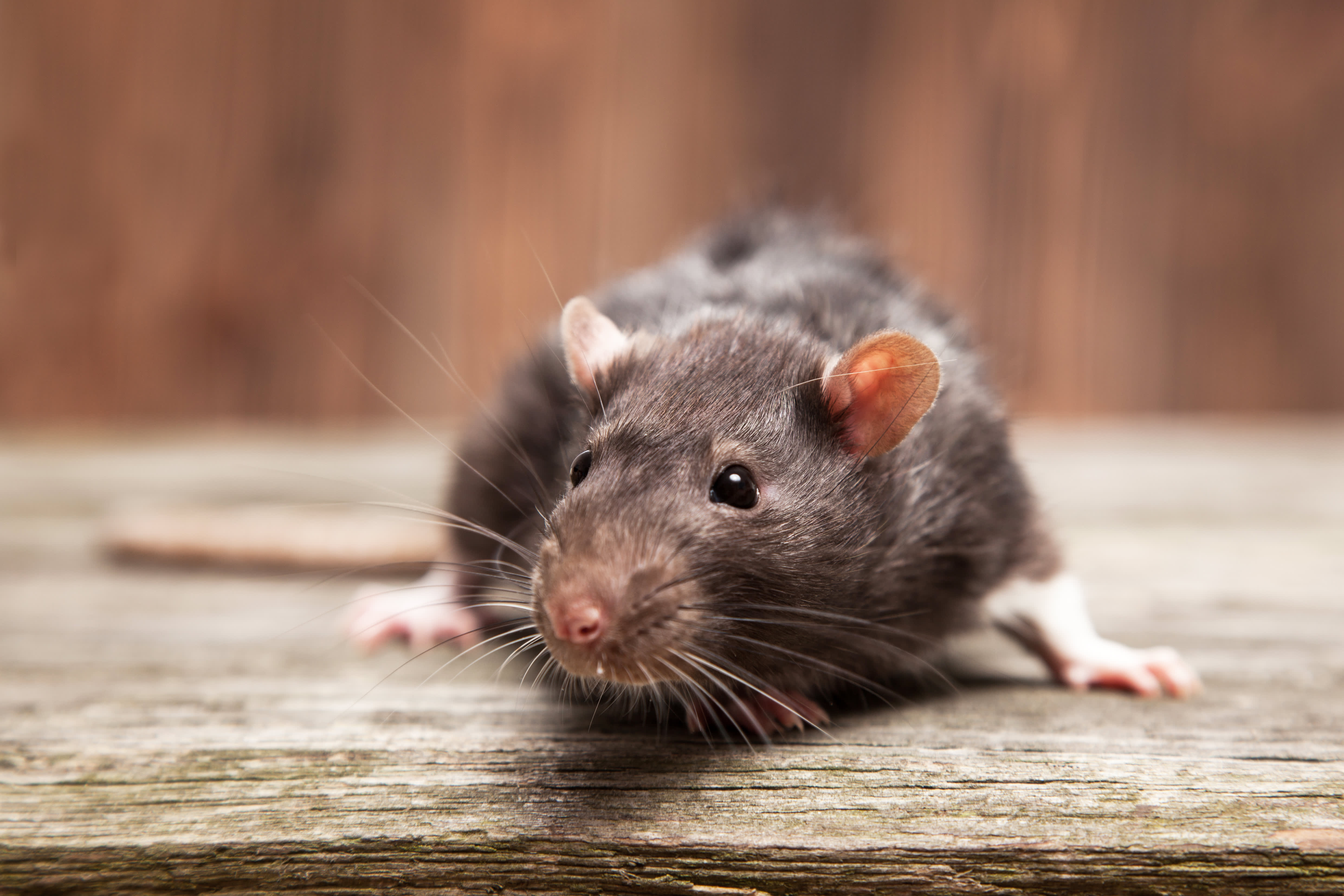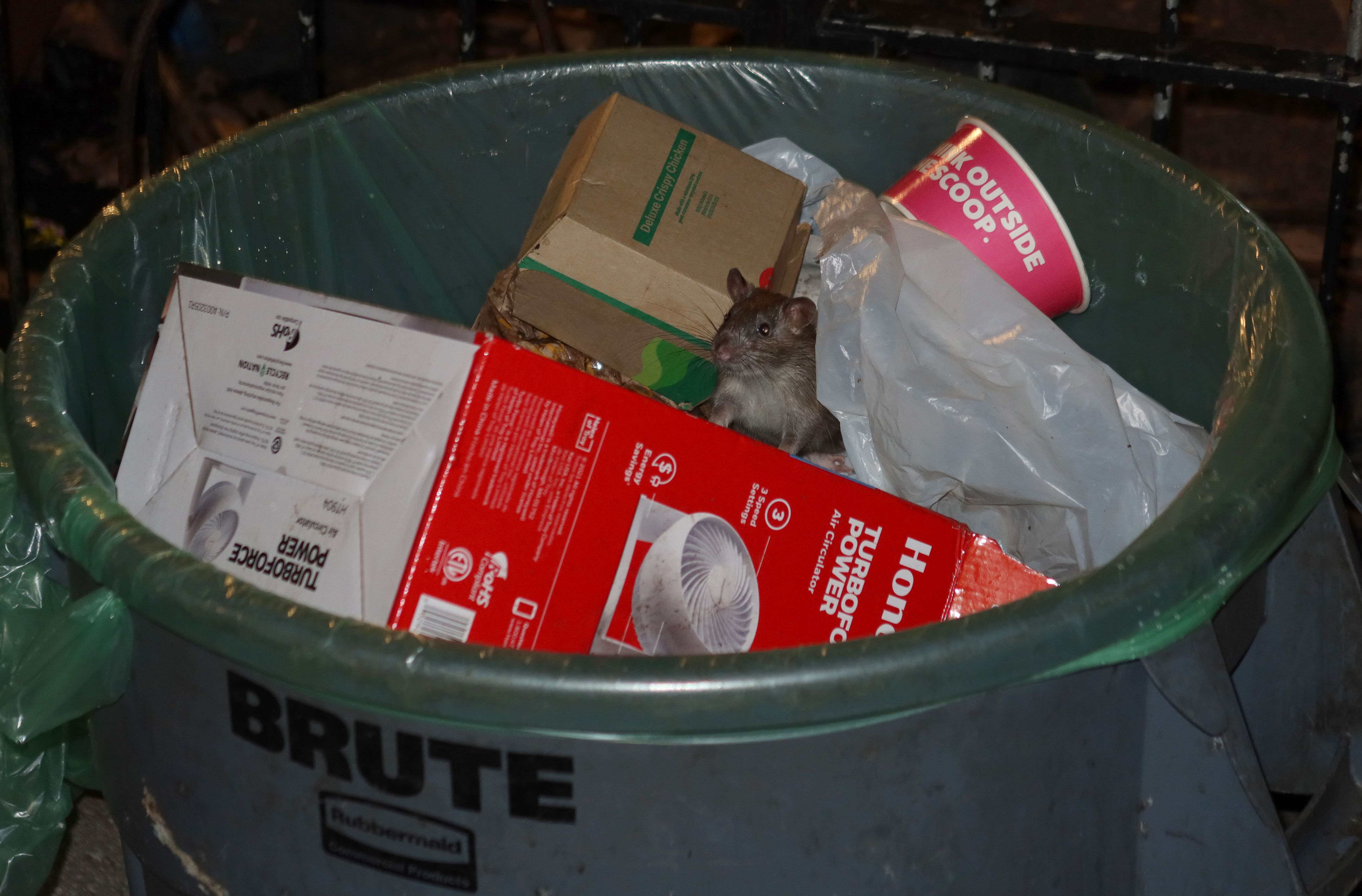The rodent population scouring New York City, already public enemy no. 1, poses a new threat as researchers reveal that millions of wild rats could be carrying the virus that causes COVID-19.
New research out Thursday again raises the question of possible animal-to-human transmission in one of the Big Apple's largest population groups: rats. Already, prior research has shown the virus can live in household pets, big cat zoo animals and wild deer.
The team of rat trappers who published research in the American Academy of Microbiology's journal mBio found the wild rodents susceptible to the virus, and through further lab study determined they can catch several of its variants.
“To the best of our knowledge, this is one of the first studies to show SARS-CoV-2 variants can cause infections in the wild rat populations in a major U.S. urban area,” Dr. Henry Wan, of the University of Missouri, said.
The team behind the research captured 79 rats in the fall of 2021, mostly in Brooklyn parks. Samples from the rodent groups were tested and 13 (16.5%) came back positive, the study found. Expanding the animals' positivity rate outward to the study's estimated citywide rat population (8 million), it can be speculated that some 1.3 million rats might show an immune response to COVID-19.
Being the robust rodents they are, rats given the virus inside a lab environment did not show any extreme reactions to SARS-CoV-2. Despite high levels of viral RNA within the animals' noses and lungs, none experienced weight loss or other significant reactions.
Get Tri-state area news delivered to your inbox. Sign up for NBC New York's News Headlines newsletter.
Of the three variants, Alpha, Delta and Omicron, rats appeared susceptible to all three, the researchers found through the additional "virus challenge study." However, Delta replicates "more efficiently" than the other two in rats.
A review of the data by The Los Angeles Times takes the implications a step further, saying the findings suggest that not only could rats be a source of reinfection for people, but they could also become a source of new variants that could pose problems for humans down the road, potentially.
“A number of studies have suggested that fragments of SARS-CoV-2 genomes were identified in sewage water systems, and that the prevalence of SARS-CoV-2 in sewage water systems coincides with outbreaks in resident human populations,” the study explained.
"However, no evidence has shown that SARS-CoV-2 viruses in sewage water are infectious, suggesting that sewage rats may have been exposed to the virus through airborne transmission, e.g., overlapping living spaces with humans or indirect transmission from unknown fomites, e.g., contaminated human food waste."
Its researchers warn much more study is required to understand the full implications of any possible threat to people. Their ever-growing population, ballooning in numbers in recent years and catching the attention of the city's mayor, makes the rodents a clear threat if a transmission link can be drawn between rats and humans.
"Rats likely play an important role in the evolution of Alpha, Delta, Omicron variants, which has the potential to result in the emergence of new variants in rats that are naive to the human population and may contain properties harmful to humans," the team of researchers said.
The threat of future virus mutations or strains among rat populations require additional monitoring, Dr. Wan said, for the protection of "both human and animal health."
The city's health department, which was not involved in the study, confirmed its knowledge of the results and emphasized that no active threat is posed to humans.
"This study suggests the Norway rats and lab rats may also be susceptible to infection with SARS-CoV-2 virus, but at this time there is no evidence to suggest that infected rats transmit the virus or pose a threat for COVID-19 to New Yorkers," a statement read.




